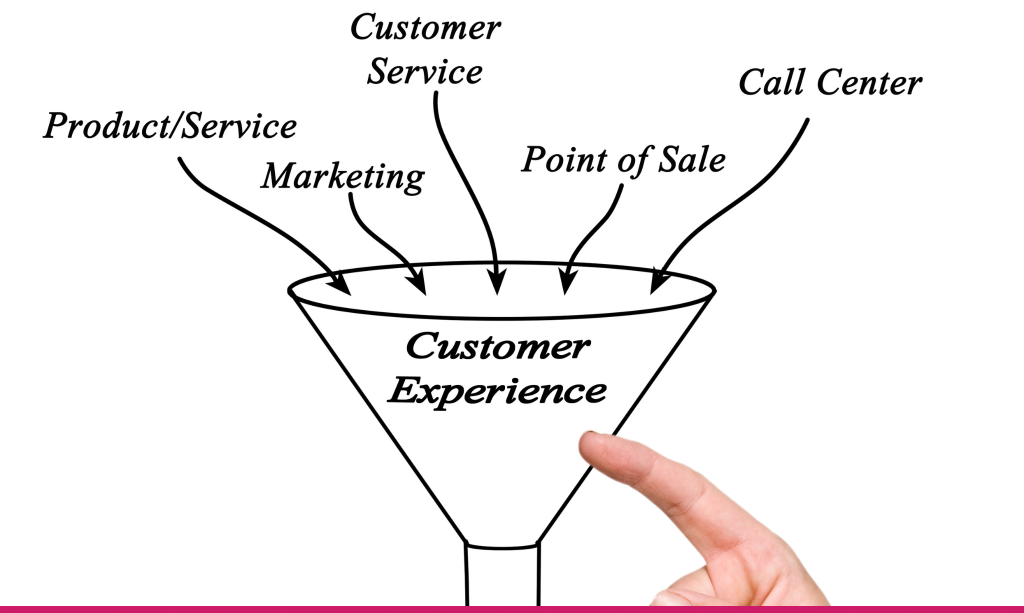Benefits of Investing in Customer Experience Management & Its Impact on Bottom Line

In today’s highly competitive business landscape, providing exceptional customer experiences has become a crucial aspect of sustaining success and driving growth. Customer experience management (CEM) refers to the strategies and practices businesses employ to create positive interactions and relationships with their customers. By investing in CEM, companies can unlock a range of benefits that directly impact their bottom line and contribute to long-term profitability. In this article, we will explore the benefits of investing in CEM and how it can help you achieve tangible business results.
Enhancing Customer Satisfaction and Loyalty
One of the primary benefits of implementing a robust CEM strategy is the ability to enhance customer satisfaction. By focusing on understanding and meeting customer needs, you can create a seamless and personalized experience that leaves a lasting impression. When customers feel valued and their expectations are consistently exceeded, they are more likely to become loyal advocates for your brand.
Driving Customer Retention and Repeat Business
Satisfied customers are not only more likely to stay loyal but also to become repeat customers. Research shows that improving customer retention rates by just 5% can increase profits by 25% to 95%. By investing in CEM, you can build strong relationships with your customers, ensuring they continue to choose your products or services over your competitors. A happy, loyal customer is not only a valuable source of recurring revenue but also a potential brand ambassador who can help attract new customers through positive word-of-mouth.
Gaining a Competitive Edge
In today’s crowded marketplace, where consumers have numerous options at their fingertips, providing an exceptional customer experience sets you apart from the competition. By investing in CEM, you can differentiate your brand and establish a reputation for delivering excellence. When customers consistently have positive interactions with your business, they are more likely to choose you over other alternatives, even if they come at a higher price. This competitive advantage can translate into increased market share and sustainable growth for your organization.
Increasing Customer Lifetime Value

Customer lifetime value (CLV) is a crucial metric that indicates the total revenue a customer generates throughout their relationship with your business. By focusing on customer experience management, you can significantly impact CLV. When customers have positive experiences, they are more likely to engage with your brand, make repeat purchases, and potentially upgrade to higher-priced products or services. By extending the lifetime value of your customers, you can maximize revenue and profitability in the long run.
Improving Brand Reputation
In the age of social media and online reviews, a single negative customer experience can quickly tarnish your brand reputation. On the other hand, consistently providing exceptional experiences can help you build a strong, positive brand image. Satisfied customers are more likely to share their positive experiences with others, both online and offline. By investing in CEM, you can proactively manage and enhance your brand’s reputation, leading to increased trust, credibility, and a larger customer base.
Increased Customer Retention and Reduced Churn Rate
CEM plays a vital role in reducing customer churn, which is the rate at which customers stop doing business with a company. By understanding customer needs, addressing pain points, and continuously improving their experiences, businesses can enhance customer retention rates. Retaining existing customers is more cost-effective than acquiring new ones, as loyal customers tend to spend more and are less likely to switch to competitors.
Positive Word-of-Mouth and Brand Advocacy

Delivering exceptional customer experiences leads to positive word-of-mouth marketing, which can significantly impact a company’s reputation and brand awareness. Satisfied customers are more likely to share their positive experiences with friends, family, and colleagues, acting as brand advocates. Their recommendations carry weight and can attract new customers, expanding the customer base.
Improved Customer Acquisition and Conversion Rates
Investing in customer experience management positively impacts customer acquisition and conversion rates. When potential customers have access to positive reviews, testimonials, and recommendations from satisfied customers, they are more likely to choose a brand over its competitors. Additionally, a seamless and personalized customer experience throughout the buyer’s journey enhances conversion rates, turning leads into paying customers.
Leveraging Data for Continuous Improvement
Moreover, a well-executed CEM strategy relies on data and insights to drive decision-making and improvements. By leveraging customer feedback, behavior analytics, and other metrics, you can identify pain points, uncover opportunities, and make data-driven optimizations. This iterative approach ensures that you are continuously enhancing the customer experience and staying ahead of evolving customer expectations.
Impact of Customer Experience Management on the Bottom Line

A. Revenue Growth through Repeat Purchases
Moreover, by providing exceptional customer experiences, businesses can foster customer loyalty and encourage repeat purchases. Satisfied customers are more likely to become loyal patrons, repeatedly choosing the brand for their needs. This ongoing customer relationship generates a consistent revenue stream and contributes to long-term growth and profitability.
B. Higher Average Order Value and Cross-Selling Opportunities
Effective customer experience management strategies can lead to higher average order values. Customized recommendations, relevant suggestions, and upselling/cross-selling opportunities can increase sales. This not only boosts immediate revenue but also enhances customer satisfaction by meeting their specific needs and preferences.
C. Cost Savings from Reduced Customer Complaints and Support Costs
Investing in customer experience management can result in cost savings for businesses. By consistently delivering exceptional experiences, the number of customer complaints and support inquiries can be significantly reduced. Resolving customer issues promptly and effectively minimizes the need for extensive customer support resources, saving both time and money.
Conclusion
Finally, investing in customer experience management offers numerous benefits and has a profound impact on the bottom line of businesses. By prioritizing customer satisfaction, businesses can enhance customer loyalty, reduce churn, and attract new customers through positive word-of-mouth. Effective customer experience management strategies also drive revenue growth, increase customer lifetime value, and generate cost savings. Customers expect businesses to adopt customer-centric approaches, leverage data, and continuously exceed their expectations.
Recent Posts
- 20 Examples Of Employee Feedback In The Workplace
- How to Obtain Valuable Input from Your Audience for Enhanced Product Development (and Increased Sales)
- 4 E’s of Employee Engagement and How To Implement Them
- How To Choose The Right Customer Experience Management Software For Your Business
- Why Customers Leave: Recognizing the Signs and Strategies for Retention



